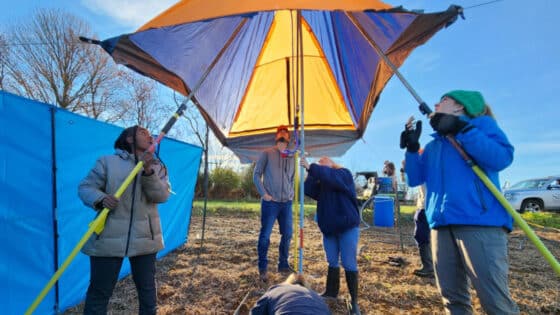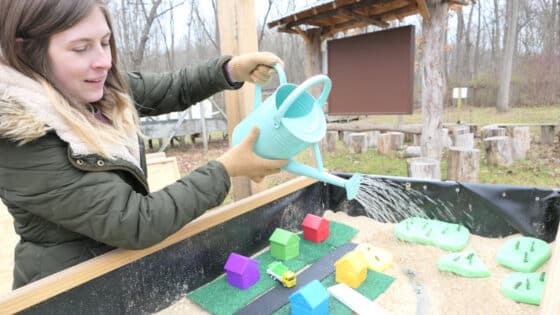
In January, Stroud™ Water Research Center welcomed Lamonte Garber as its third Watershed Restoration Group hire. He will serve as the watershed restoration coordinator, working with landowners and partnering agencies on restoration and conservation projects throughout Pennsylvania and beyond.
Hailing from the Chesapeake Bay Foundation (CBF), Garber has established himself as a friend of farmers and the environment.
He received his Bachelor of Science degree in agricultural economics and rural sociology from The Pennsylvania State University. Throughout his career — having a great appreciation of agriculture and environmental stewardship — Garber has worked with farmers to implement best management practices (BMPs). His talents in relationship building, marketing, fundraising, and project management will no doubt serve the Stroud Center well.
Garber’s connection to the land runs deep. He comes from a long line of farmers, including his father. “It’s in my blood,” he said. “There is so much to appreciate about agriculture beyond the food it provides us. Agriculture as a whole represents a cost effective opportunity for environmental improvement compared to many other options. Farmers manage a lot of land, animals, and nutrients, so when they make changes, it can have a significant impact on their nearby streams, on downstream waterways, and on groundwater.”
Growing up near scenic Lititz Run in Lancaster County, Pa., Garber was surrounded by the farming community he loves as well as by Nature’s playground. He spent much of his childhood fishing, bird watching, hiking, and camping, and he saw first-hand the long-term benefits of watershed restoration.
Witness to a Stream’s Rebirth
Lititz Run was once a significantly impaired stream, suffering from several types of pollution, including sewage and fertilizer runoff. Restoration work since 1992 has greatly improved the stream’s condition and made it a model for stream restoration.
Lamonte said, “I remember when Lititz Run was stocked every season with trout that didn’t make it through the heat of the summer. Now there are reproducing trout. I think a lot of people have the opposite experience. They see things get worse over time. I got to see what’s possible. If we can bring together interested landowners with good science and financial resources, we can do great things.” That can-do attitude, which has even led Garber to Mount Everest base camp, is an important part of the Stroud Center’s formula for success.
In welcoming Garber, David Wise, watershed restoration manager, said, “Lamonte will be a great addition to our group. He brings a wealth of experience with agriculture. He’s especially skillful in helping farmers envision how they can integrate conservation into their operations, helping both the farms and the streams. He’s energetic, a thinker, and a real gentleman.”
Two Years, 50 Farmers, 400 BMPs
Garber will work alongside Wise and Director of Watershed Restoration Matt Ehrhart; during the next two years they’ll oversee the implementation of more than 40 forested buffers and help more than 50 farmers address whole-farm conservation needs through the installation of roughly 400 BMPs. And that’s only counting efforts that have already been funded.
“We’re optimistic that we’ll be able to accomplish even more than that with additional funding,” said Ehrhart.
Garber and his wife Marcella Hostetler live in the city of Lancaster, Pa. They have two daughters, Madeline and Maia, and attend Community Mennonite Church of Lancaster. Garber loves to travel; past destinations include Haiti, Kenya, Somalia, Jordan, the Netherlands, Nepal, and South Africa. But he always returns to his favorite place on Earth — his family’s cabin along beautiful Fishing Creek in Orangeville, Pa.



